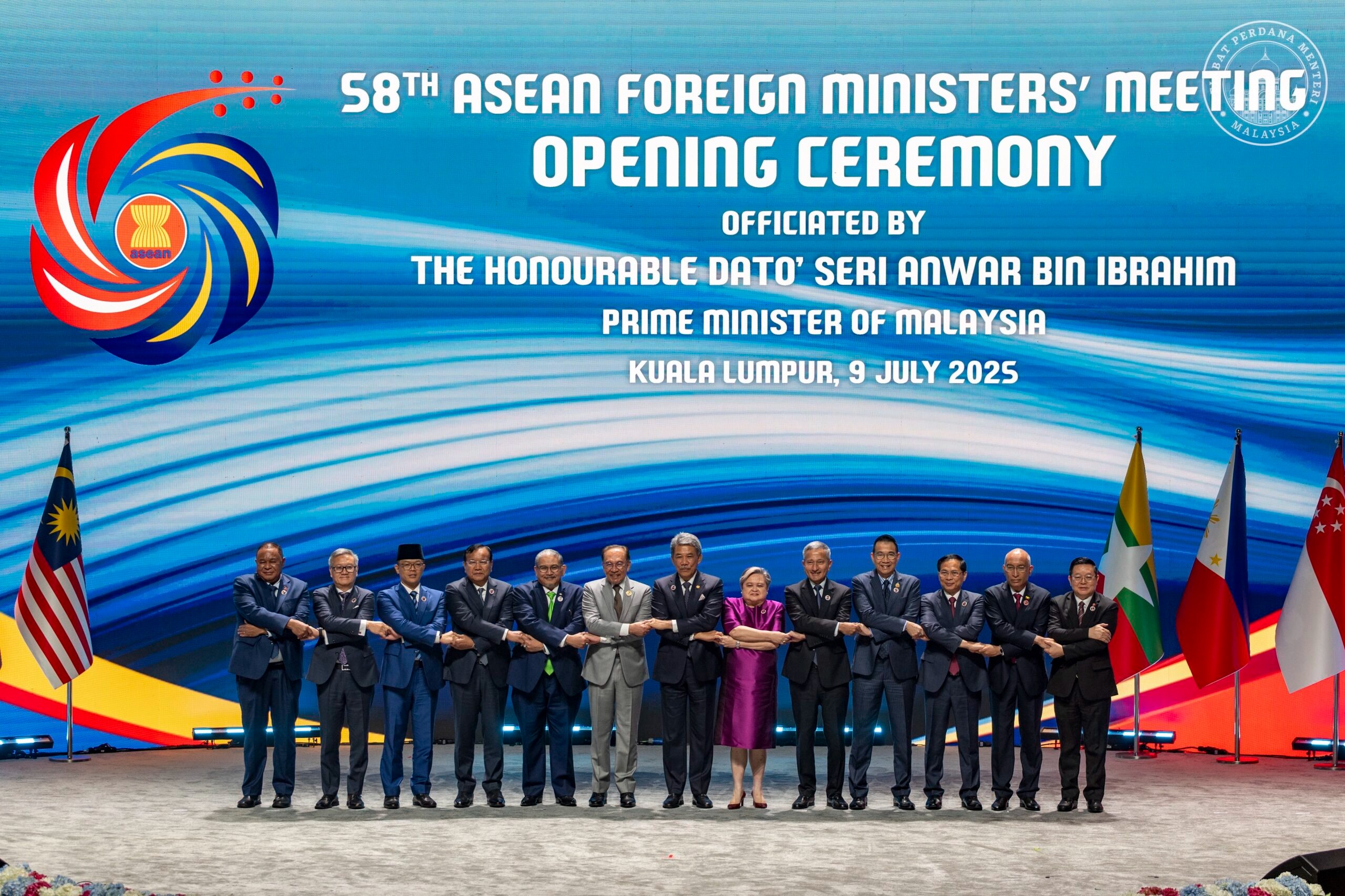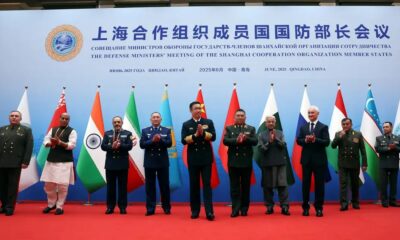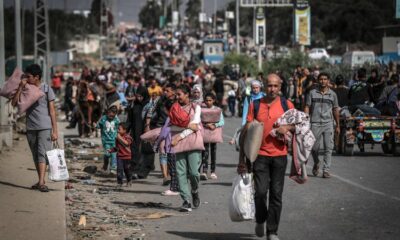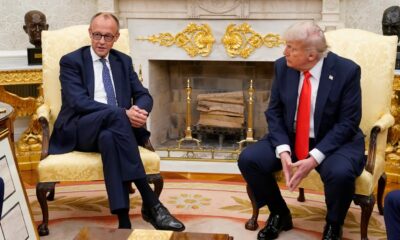Asia
India reels from deadly train crash

More than 288 people have died in India’s worst rail crash in over two decades after a passenger train went off the tracks and hit another one. The cause of two trains derailed, preliminary has been reported due to a signal failure, but still there is no exact clue.
It’s the deadliest rail crash in the country, and the surviving victims are blaming the government for poor maintenance and mismanagement. Nearly 1,000 others received injuries in the incident, where the government says they are working to investigate the incident.
There were over 2,000 people on board at the time of the clash, and the rescue team scrambled to rescue survivors and bring out the dead bodies. Hospitals filled with bodies and people were dispersing to find their loved ones. The India Army soldiers and its Air Force choppers were also present to rescue and transport the injured to hospitals.
One of the survivors, Manto Kumar, who was traveling on the Coromandel Express with six of his friends, said suddenly something crashed into them. Some of the coaches rolled to the other side,” the 32-year-old restaurant worker told CNN from a hospital in India’s eastern Odisha state.
“I got up and wrapped my shirt around my bleeding head. Then, I started looking for my friends. Everyone was shouting ‘save us… save us.” One of Kumar’s friends lost both his legs in the crash and was rushed to hospital. He did not survive his injuries.
Unfolding stories across India
Kumar’s story is just one of hundreds unfolding across the country because Friday’s train crash was the worst ever in India where people are in shock.
Three days later, the families are still trying to locate their loved ones and still many dead bodies remain unidentified. The health conditions of some of the injured passengers were reported critical.
Hospitals in the town of Balasore were flooded with injuries and the dead bodies have been covered by white sheets. Some of the killed people were only the breadwinner in the family, where on a daily basis, thousands of poor people travel in Indian trains without a reservation from one place to another.
Indian Railway Minister, Ashwini Vaishnaw said that investigation has been underway to find the cause of the incident. Vaishnaw, who is facing calls to resign, said that he will provide full reports on the circumstance of the crash.
Indian Primer distressed by train accident
The Indian Prime Minister Narendra Modi also visited the crash site to examine the relief efforts and to also meet with some injured people and doctors in the hospital.
“Distressed by the train accident in Odisha. In this hour of grief, my thoughts are with the bereaved families. May the injured recover soon,” Modi said, adding that all possible assistance is being given to those affected.

Indian Prime Minister Modi speaks to officials and rescue workers at the site.
In a tweet message he said: “Took stock of the situation at the site of the tragedy in Odisha. Words can’t capture my deep sorrow. We stand committed to providing all possible assistance to those affected. I laud all those working round the clock, on the ground and helping out in relief work.”
Modi is amazed by the courage and compassion shown by the Indian people in the face of adversity. “As soon as the train mishap took place in Odisha, people immersed themselves in assisting rescue ops. Several people lined up to donate blood,” he added.
Error in signaling system lead to crash
Railway Minister Vaishnaw citing a preliminary report said that a signal was given to the high-speed Coromandel Express to run on the main track line, but the signal later changed.
Due to the error, the train entered an adjacent loop line where it rammed into a freight truck loaded with iron ore and resulted in a deadly crash.
Still the result of investigation is pending and the Indian Railways spokesperson, Jaya Varma Sinha said that the train moved forward only after it received a ‘green’ signal.
The spokesman said that the train did not jump any signal nor the train was over speed
Signaling failure can occur either due to technical malfunction or human error, a train station superintendent in Odisha state explained. He said that traffic signals are often handled by personnel in every station, blaming the negligence of drivers for the crash.
Asia
ASEAN and China deepen ties amid threat of new US tariffs

On Thursday, ASEAN foreign ministers emphasized the strength of the bloc’s relationship with China as they sought to deepen ties with Beijing in the face of new “reciprocal” punitive tariffs threatened by US President Donald Trump. Experts believe Trump’s aggressive tariff policy is bringing ASEAN and China even closer.
In his opening speech at a meeting in Kuala Lumpur with ASEAN foreign ministers and their Chinese counterpart, Wang Yi, Malaysian Foreign Minister Mohamad Hasan said that China is “one of ASEAN’s most important and dynamic partners.”
“This relationship is built on mutual trust, common interests, and growing economic interdependence,” he said.
Wang echoed these sentiments, emphasizing the countries’ shared Asian identity and goals. “China has always seen ASEAN as a priority in its neighborhood diplomacy and sees the region as a pioneer in building a global community with a shared future for humanity,” he said.
The meeting was part of the annual Ministerial Conference of ASEAN foreign ministers. Following the meeting, there will be meetings with Japan, China, and South Korea, as well as with US Secretary of State Marco Rubio and other dialogue partners.
Addressing the ongoing geopolitical shifts, Wang noted that the current global turmoil and transformation raise questions of unity or division, peace or conflict, and cooperation or confrontation.
“We must learn from history, actively promote an equal and structured world order, and push the international system toward greater justice and equality by supporting inclusive and shared economic globalization,” he said.
Trade relations
Since 2020, ASEAN and China have remained each other’s largest trading partners, with total trade volume reaching $770.9 billion in 2024, a 10.6% increase from the previous year.
In May, the two sides announced the ASEAN-China Free Trade Area (ACFTA) 3.0 agreement after nine rounds of negotiations spanning two and a half years.
The upgraded agreement includes nine new chapters covering the digital economy, green economy, and supply chain connectivity. China’s Ministry of Commerce described this framework as a gateway to building the China-ASEAN mega-market.
Meanwhile, ASEAN members are preparing for new US tariffs set to take effect on August 1. The tariffs are set at 40% for Myanmar and Laos, 36% for Cambodia and Thailand, 32% for Indonesia, 25% for Malaysia and Brunei, and 20% for Vietnam and the Philippines. Washington has not yet announced an updated rate for Singapore, which was taxed at a 10% rate when the tariffs were announced in April.
Response to tariffs
On Wednesday, at the start of the ASEAN foreign ministers’ meeting, Malaysian Prime Minister Anwar Ibrahim stated that trade is being used as a tool for “pressure, isolation, and control,” adding that “tariffs, export restrictions, and investment barriers have now become sharp instruments of geopolitical competition.”
In a speech to parliament on Wednesday, Indonesian Finance Minister Sri Mulyani called for multilateral institutions such as the World Trade Organization, the UN, and the World Bank to play a more significant role in the trade war. “The role of these multilateral institutions has been greatly weakened and is not even respected,” she said.
Thailand announced $1.22 billion in mitigation measures. According to Deputy Finance Minister Paopoom Rojanasakul, Thailand’s central bank is also expected to further loosen its monetary policy to reduce tariffs.
A draft of the joint communique from the foreign ministers’ meeting, seen by Nikkei Asia, describes unilateral tariffs as “counterproductive” and warns that they “risk exacerbating global economic fragmentation and posing complex challenges to ASEAN’s economic stability and growth.” The draft, expected to be released on Friday, affirms that ASEAN is “committed to working constructively with all partners to this end.”
Asia
Chinese navy chief and top nuclear scientist expelled from legislature

The chief of staff for the People’s Liberation Army (PLA) Navy, Vice Admiral Li Hanjun, and Liu Shipeng, the deputy chief engineer of the state-owned China National Nuclear Corporation, were removed from their positions in the country’s legislative body.
Li is the latest in a series of PLA generals and a handful of defense industry executives implicated in a widespread investigation within the military.
In a statement on Friday, the NPC Standing Committee announced, “The Navy Soldiers’ Congress has decided to remove Li Hanjun from his post as a representative to the 14th National People’s Congress.”
The Gansu People’s Congress also dismissed Liu Shipeng from his role as an NPC deputy.
Additionally, the Standing Committee revealed it had voted to remove Miao Hua, a former top general who previously oversaw the PLA’s ideological work, from the Central Military Commission (CMC), China’s highest military command body led by President Xi Jinping.
The removal of Li and Liu from their NPC memberships suggests they are facing serious disciplinary action.
China typically remains silent about purges within the military, and announcements from the NPC are one of the few indicators of such campaigns.
There is little public information available about Li and Liu, as both have worked in sensitive positions.
Before becoming the navy’s chief of staff, Li, 60, was the deputy director of the CMC’s Training and Administration Department. He was appointed to this role after serving for a year in the CMC’s Office for Reform and Organisational Structure.
In 2014, he was promoted to vice admiral upon his appointment as commander of the naval base in Fujian province, where Miao also spent a significant part of his career. At that time, he was the director of training at the China Naval Command College and was soon promoted to president of the school.
According to official media reports, nuclear scientist Liu was born into a family that “served China’s nuclear dream for three generations.”
As the deputy chief engineer at CNNC, which oversees all aspects of China’s civil and military nuclear programs, Liu also served as the Communist Party secretary and president of CNNC’s “404 base” in Gansu.
Covering an area of over 1,000 square kilometers, the base was established in 1958 and is the country’s first and largest nuclear research center. It played a crucial role in the development of China’s first atomic bomb in 1964 and its first hydrogen bomb three years later.
This secretive base is still considered a key hub for China’s nuclear deterrence and nuclear industry.
According to statements from provincial authorities, Liu was named “Gansu’s outstanding entrepreneur” in 2023.
Asia
China, US reach agreement on export controls

The Chinese Ministry of Commerce announced on Friday afternoon that Beijing and Washington have remained in close contact since the two-day trade talks in London earlier this month, confirming the details of a framework agreement.
“China will review and approve export applications for controlled items in accordance with its laws and regulations, and the US side will, in turn, lift a series of restrictive measures against China,” the ministry stated.
“We hope the US side will cooperate with China in line with the important consensus and conditions established during the conversation between the two presidents on June 5,” the statement continued.
On Thursday, US President Donald Trump said the US had “signed” a trade deal with China the previous day, without providing details.
“We signed the deal with China yesterday, right? We signed the deal with China,” Trump said at a White House event introducing a budget law. “With the China deal, we are starting to open up China,” he added.
He also mentioned that a “very big” deal, likely with India, would be signed soon.
Rare earth elements
Following the event, US Commerce Secretary Howard Lutnick told reporters that the US and China had signed an agreement codifying the terms decided upon in previous trade negotiations.
“They will deliver rare earth elements to us,” Lutnick said in a televised interview with Bloomberg, adding that if this commitment is fulfilled, Washington will lift its “countermeasures.”
Rare earth elements, essential for producing high-tech products, including those for the defense industry, were a major point of contention in the trade talks. China holds a near-monopoly on the supply of these minerals due to its massive share of global refining capacity.
Responding to a question on Thursday about rare earth exports, ministry spokesman He Yadong said China had approved a “certain number” of applications and would “continue to strengthen” the review and approval process for eligible applications.
He added that Beijing is willing to “strengthen communication and dialogue” with other countries on export controls and actively promote appropriate trade.
Lutnick also stated that the US plans to reach agreements with 10 major trading partners in the coming weeks. The deadline for countries to negotiate trade terms before higher tariffs are reinstated was July 9, following a 90-day suspension of import tariff hikes announced on April 2.
The two negotiating teams concluded the London talks by announcing they had agreed “in principle” on a “framework” that both sides would take home for their respective leaders to review, as they sought to get their uneasy truce, signed last month in Geneva, back on track.
The negotiations began after a highly anticipated phone call between Xi Jinping and Trump, which seemingly ended an intractable stalemate.
In the weeks following the initial agreement in Switzerland, Washington claimed China was restricting exports of critical minerals, while Beijing reacted to US restrictions on semiconductors and threats to impose visa barriers on Chinese students.
-

 Diplomacy2 weeks ago
Diplomacy2 weeks agoBRICS internal trade volume hits the $1 trillion mark
-

 Europe2 weeks ago
Europe2 weeks agoNew MI6 chief’s grandfather was a Nazi collaborator known as ‘The Butcher’
-

 Asia2 weeks ago
Asia2 weeks agoChina hosts SCO defense ministers on warship amid regional tensions
-

 Europe2 weeks ago
Europe2 weeks agoWeber warns against US dominance, urges European self-confidence
-

 Middle East2 days ago
Middle East2 days agoIsrael details plan for ‘humanitarian zone’ in Rafah, called a ‘concentration camp’ by critics
-

 Interview2 weeks ago
Interview2 weeks agoWho won the Israel-Iran war? Retired Rear Admiral Alaettin Sevim speaks to Harici
-

 America2 weeks ago
America2 weeks agoUS intelligence officials claim Iran’s nuclear facilities were destroyed
-

 Europe2 weeks ago
Europe2 weeks agoMerz urges Brussels to secure a US trade deal within days


















